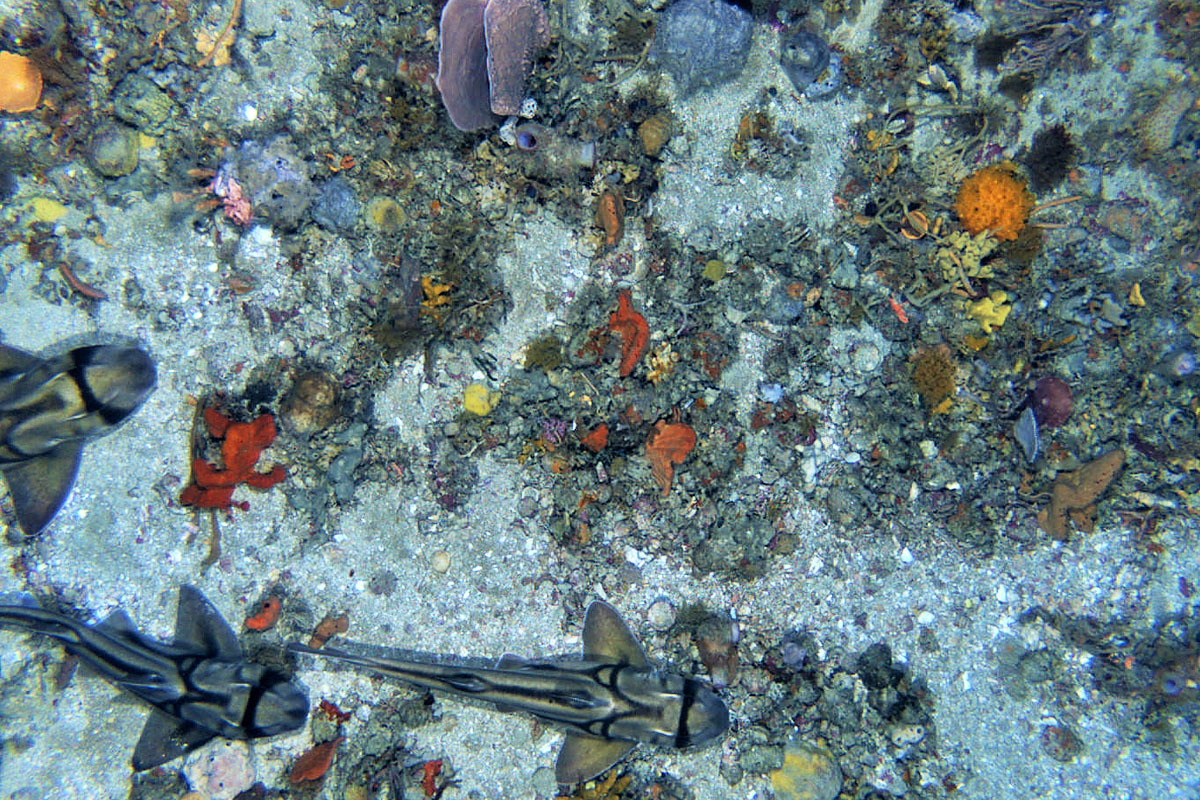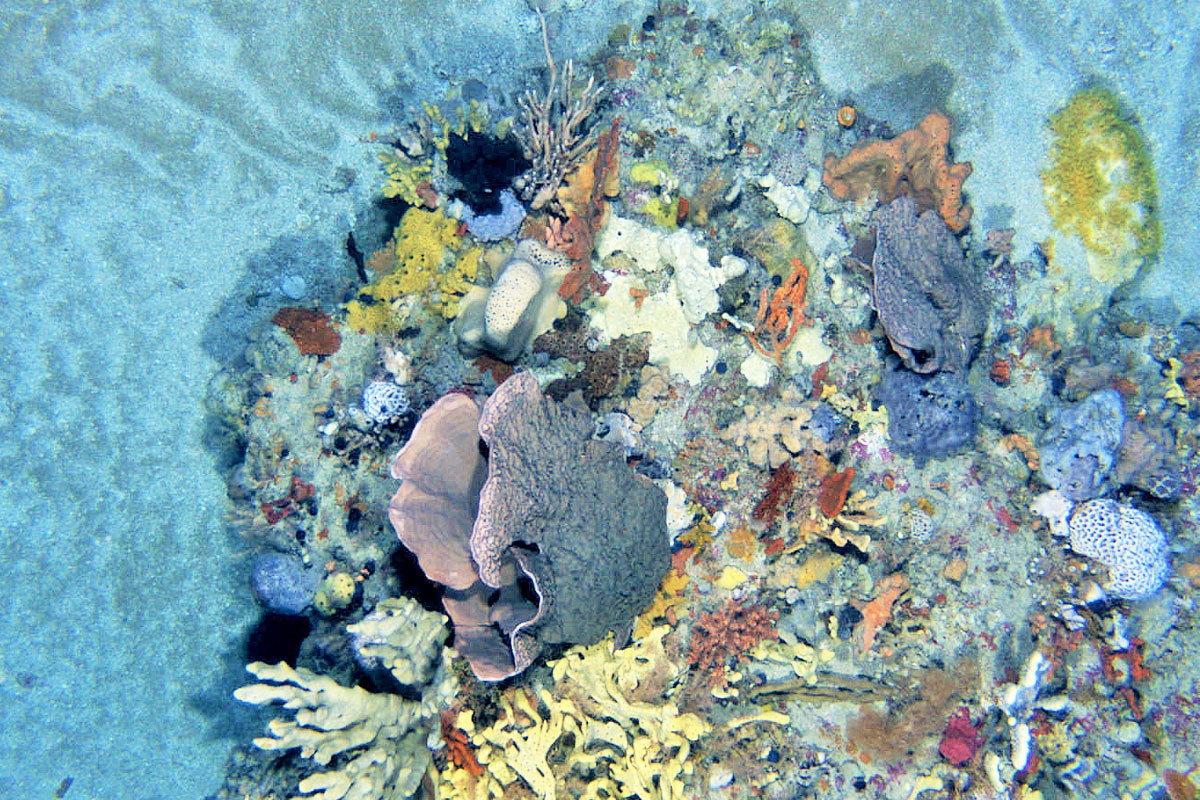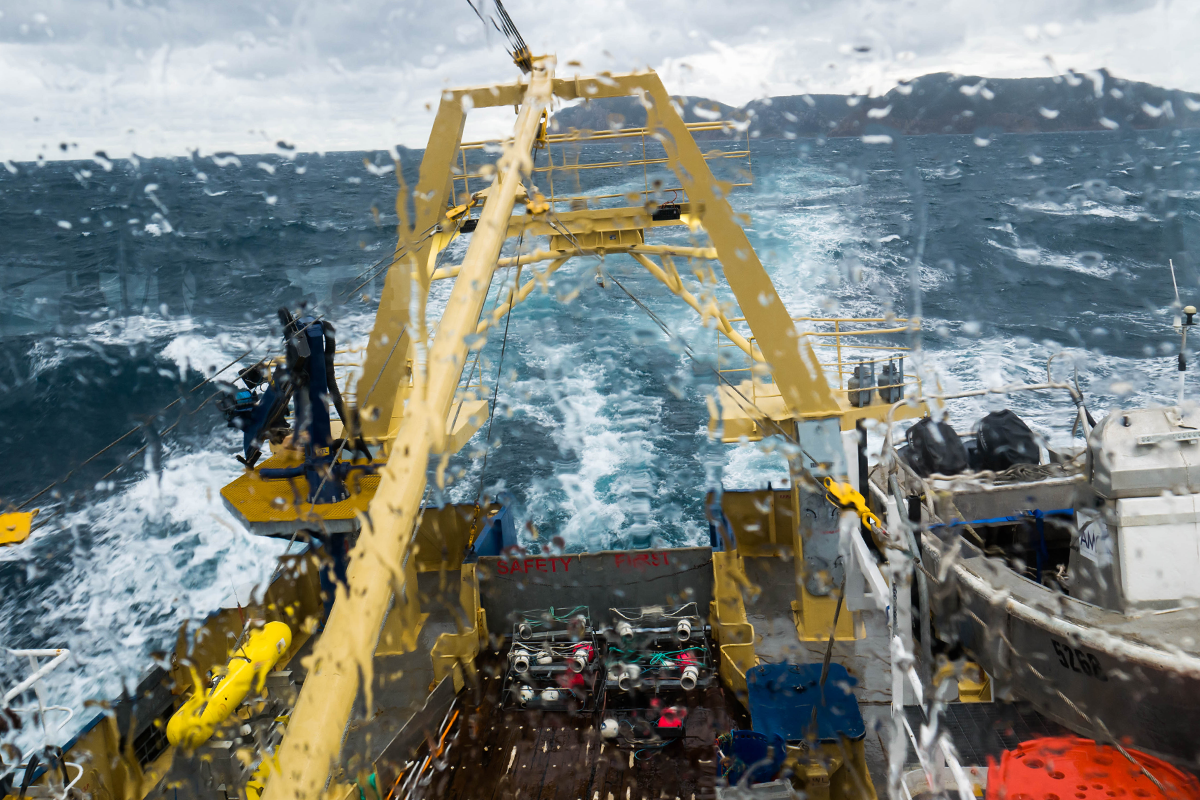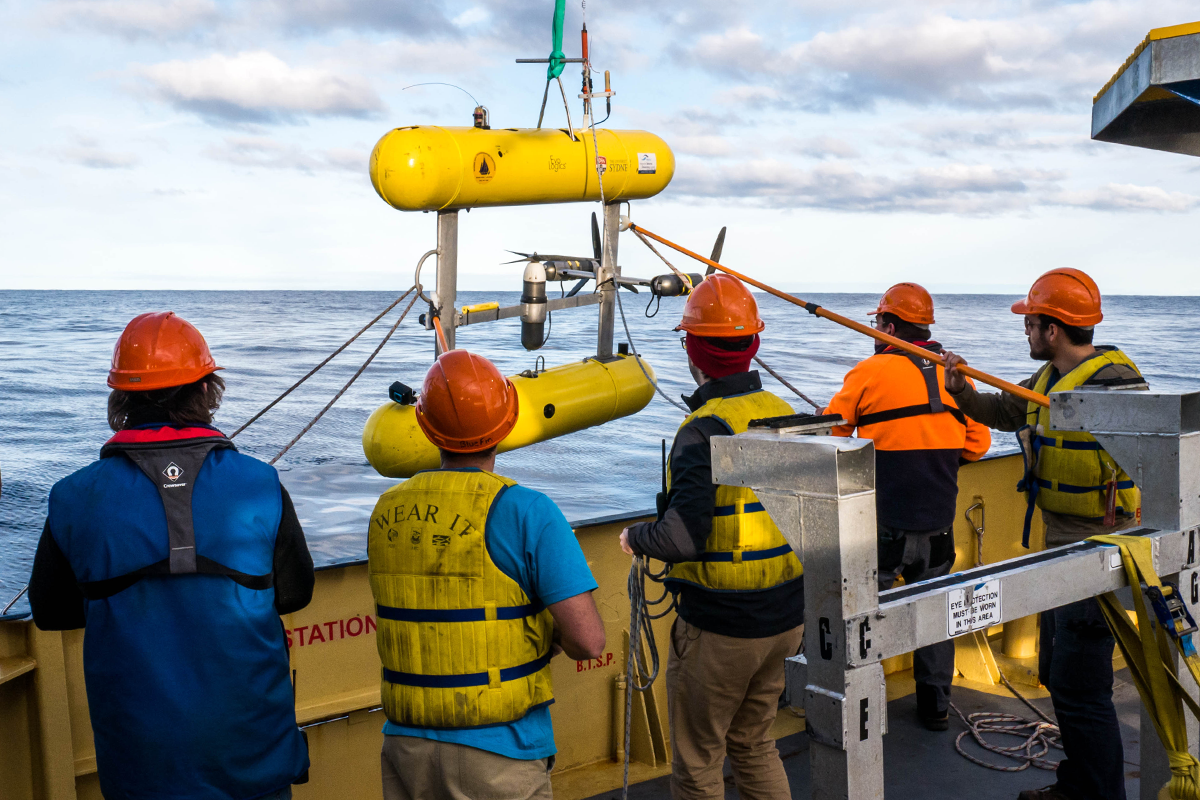September 13, 2017

An unusually large group of Port Jackson sharks was a surprise highlight for scientists surveying life in the Beagle Commonwealth Marine Reserve (CMR) earlier this year.
Hundreds of the distinctive, dark-striped sharks were massed on the sandy seafloor among low rocky reefs covered with brightly coloured sponges.
‘This is the largest aggregation of Port Jackson sharks I’ve ever seen,’ research leader Neville Barrett of the University of Tasmania Institute of Marine and Antarctic Studies (IMAS) says.
‘While these sharks (known as ‘Sleepy Joes’) often gather in places like ledges and appear to sleep, they are very rarely seen in numbers more than half a dozen, so this aggregation appears unique.
‘We know they lay their eggs further north (typically mid to southern NSW) in August to September, so they were unlikely to be spawning, but it may have been a mating aggregation where the eggs are first fertilised.
‘This is a valuable insight to their biology, and given that this CMR is protected from potentially disruptive activities (such as trawling), it shows that a species such as this may benefit from such closures, particularly at vulnerable life history stages such as mating.’

The Beagle CMR reaches across Bass Strait from south-east of Wilson’s Promontory to north-west of Flinders Island, covering almost 3000 square kilometres of seafloor in depths of 50─70 metres. It surrounds Tasmania's Kent Group Marine Reserve (Erith, Dover, and Deal islands), and the Hogan and Curtis Island groups, covering seafloor that once formed a land bridge between Tasmania and Victoria during the last ice age 10 000 years ago.
Examples of its rocky reef habitats were surveyed during July as part of a pilot survey nested within a 10-day research voyage of the Australian Maritime College (AMC) research vessel Bluefin off Tasmania.
The voyage was part of national programs run by the Integrated Marine Observing System and the National Environmental Science Programme Marine Biodiversity Hub to survey and monitor seafloor life beyond diving depths in the waters of Australia’s continental shelf. It was supported by funding from Parks Australia which manages the Commonwealth Marine Reserve Network.

While only one day was able to be spent in the Beagle CMR due to weather constraints, the information gathered will be invaluable for planning a more comprehensive survey in this CMR in 2018.
The sponge garden surveys were carried out using the IMOS autonomous underwater vehicle Sirius. Images taken by Sirius have just been released after a lengthy processing period, and reveal that while reef outcrops in this region are rare, they support an incredible density and diversity of sponge species.
‘An important aim of the survey was to gain insights into the distribution and nature of sponge habitats in this region,’ Dr Barrett says. ‘Before the survey we had no biological data on seabed habitats in the Beagle CMR, an area smack in the middle of Bass Strait believed to hold a richness of sponge gardens.
‘We’re just starting to appreciate the important role that sponges play by concentrating the nutrients swept past in the currents, providing a range of food for the other species that live there. We want to understand how fast the sponge communities grow, what sort of things influence them, and whether their cover changes a lot from year to year.’

After encountering wild weather in Bass Strait, the Bluefin headed south to the Flinders CMR off eastern Tasmania to conduct repeat surveys at core reference sites near Cape Barren Island.
‘With repeated surveys we can get a reasonable understanding of natural variability: how change is driven by ocean currents, temperature shifts, storms, introduced species and climate change,’ Dr Barrett says.
‘We can also assess the impacts of human activities such as trawl fishing, scallop dredging, and oil and gas operations, and management interventions such as various levels of protection from fishing.’
The Bluefin surveys form part of a long-term observation program on deep water reefs surrounding Tasmania that in turn is part of a larger national program observing reef systems such as these at the continental scale. The overall program is facilitated by IMOS, with IMAS coordinating the Tasmanian component, and AMC assisting with logistical support.
- Log in to post comments
